Located in the Sawai Madhopur Region of Rajasthan is the kingdom of the Majestic Bengal Tigers. One of the best places to spot these wild cats; Ranthambore National Park should surely be on your travel list while visiting India. This park is approximately 130 km from Jaipur and is a haven for wildlife enthusiasts and nature lovers.
From spotting the wild animals to enjoying bird watching, there is a lot to do here at this park. Enjoy the peace, photography, and more! Keep reading this blog to know more about your destination.
About Ranthambore National Park
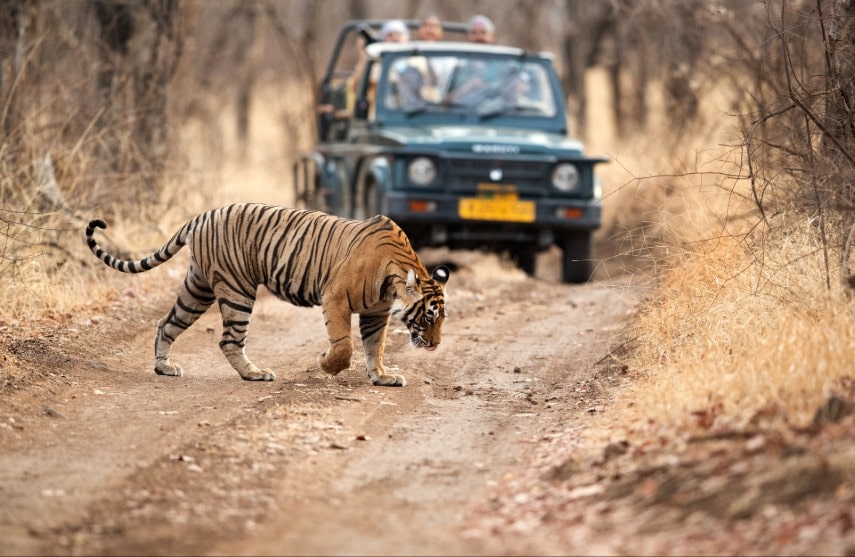
Ranthambore National Park is located in Sawai Madhopur city in Rajasthan. It is a wildlife haven! It’s famous for its majestic Bengal tigers. The park spans rugged terrains, lush forests, and serene lakes. Ancient ruins, including Ranthambore Fort, add a historical charm. Spot leopards, deer, and exotic birds on thrilling safaris. Sunrise and sunset paint the landscape in golden hues. It’s a perfect escape for nature lovers and photographers. Experience the wild beauty and unmatched tranquillity of this iconic Indian destination.
What makes Ranthambore National Parks special?
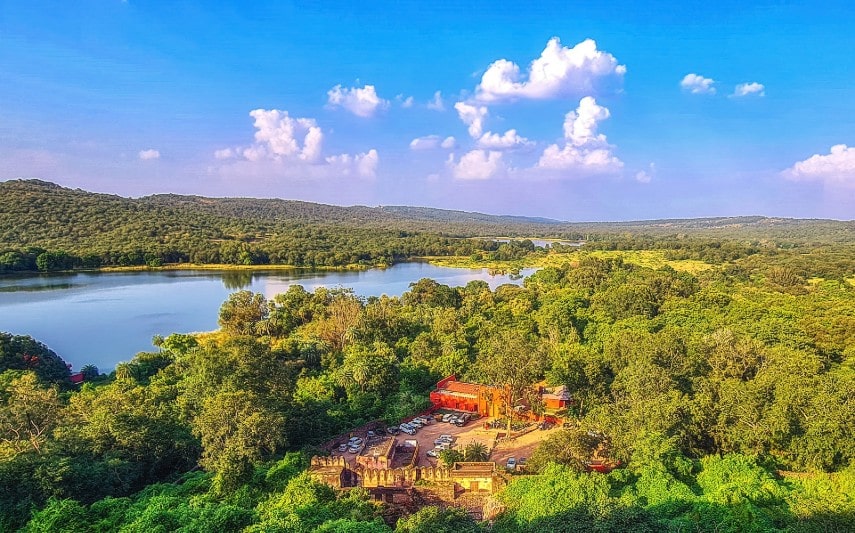
It’s famed for its majestic Bengal tigers, often spotted lounging in their natural habitat. Ancient ruins, like the Ranthambore Fort, add historical charm to the destination. Then there are lakes and the dense forest makes it a picturesque escape. Home to diverse species like leopards, deer, and exotic birds, it’s a paradise for nature lovers and photographers. Adventure meets serenity here, creating an unforgettable experience.
What can you see at Ranthambore National Park?
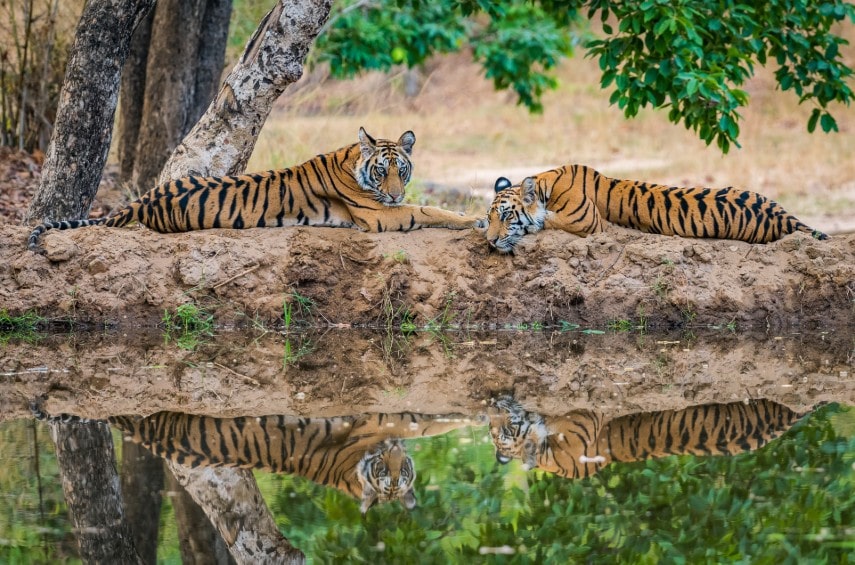
This is one of those places that offers a thrilling glimpse of Bengal tigers in their natural habitat. Spot leopards, sloth bears, and marsh crocodiles prowl the wilderness. Vibrant birds like kingfishers and parakeets dazzle birdwatchers. Picturesque lakes, like Padam Talao, host sambar deer and wild boars. Explore the ancient Ranthambore Fort and the mysterious ruins hidden in the forest. Nature and history blend seamlessly, making every visit a captivating adventure.
| Leopards | Sloth Bears |
| Wild Boars | Chital |
| Nilgai | Crested serpent eagles |
| Painted storks | Marsh crocodiles |
Best time to visit Ranthambore National Park
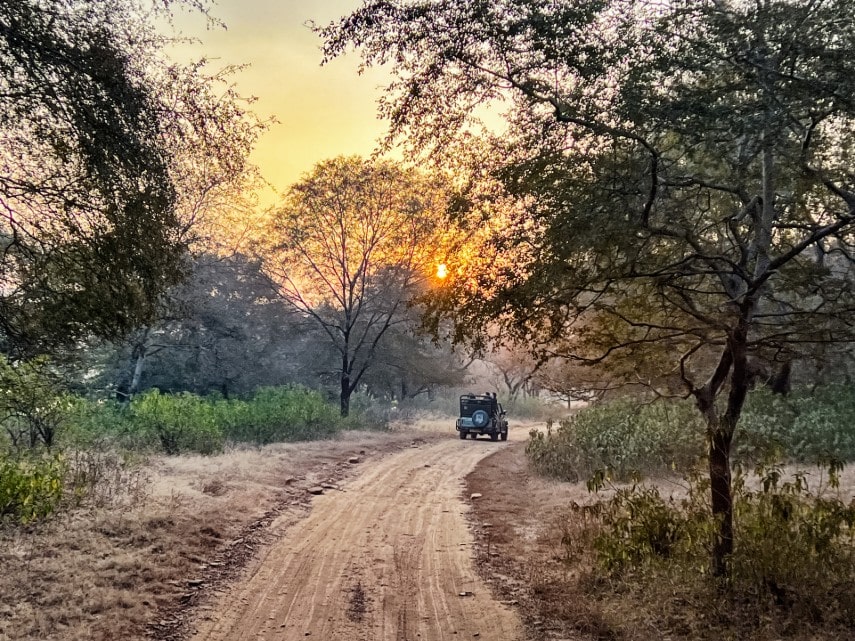
The best time to visit Ranthambore National Park is between October and April. During these months, the weather is pleasant, making wildlife safaris enjoyable. The dry season, from March to June, offers higher chances of spotting tigers and other animals near water sources, though the heat can be intense. The park remains closed during the monsoon, from July to September, for breeding season and conservation. Morning and afternoon safaris provide unique experiences, with animals often active early or near dusk. Plan your visit accordingly for the best wildlife sightings!
Best time to see tigers in Ranthambore National Park

The best time to see tigers in Ranthambore National Park is either during the summer months or winter months; i.e., between May and June or October to March, respectively. When it comes to summer, with a temperature rise, tigers and other wildlife frequently gather near waterholes, increasing your chances of spotting them.
Whereas, during winter you can catch the tigers and other wildlife relaxing and walking around for some sunshine. Alen Webb (one of our clients) booked a Ranthambore safari and tour of the National Park last year for tiger sightings and other activities from us. As per our travel expert’s suggestions, they booked their safari for January and had a great time during the month.
How to reach Ranthambore National Park?
All the means of transport are going to be comfortable because Ranthambore is well-connected with the other cities around.
By Air
The nearest airport is Jaipur International Airport, about 160 km away. From Jaipur, you can hire a taxi or take a bus to reach the park.
By Train
The nearest railway station is Sawai Madhopur Junction, located just 10 km from the park. It is well-connected to major cities like Delhi, Jaipur, and Mumbai.
By Road
Ranthambore is accessible via well-maintained roads. Regular buses, taxis, and private vehicles connect it to cities like Jaipur (160 km), Delhi (390 km), and Kota (110 km).
Things to do in Ranthambore National Park
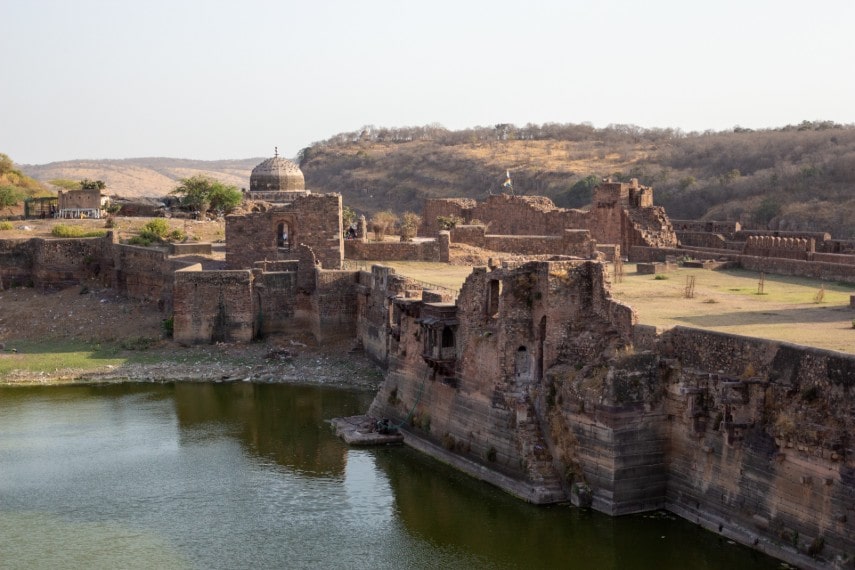
This national park offers thrilling activities for nature and wildlife enthusiasts. Embark on safaris to spot majestic wildlife and capture stunning photographs of the natural surroundings. Explore historical ruins and ancient structures within the park, blending history with nature. Relax by serene water bodies, watching animals and birds in their habitat. Enjoy guided walks to learn about the park’s unique ecosystem. Whether seeking adventure or tranquillity, the park provides unforgettable experiences amid lush greenery and breathtaking landscapes.
| Things to do in Ranthambore National Park | |
| Explore the park and spot tigers, leopards, and other wildlife. | Observe over 300 species of vibrant birds. |
| Capture stunning landscapes and wildlife moments. | Explore ancient ruins and forts within the park. |
| Discover the unique flora and fauna on guided walks. | Enjoy the tranquillity near scenic water bodies. |
| Learn about conservation and park ecology. | You can also explore the area around the park. |
Safari experience in Ranthambore National Park

The safari experience in Ranthambore National Park is a thrilling adventure that immerses you in nature’s wonders. Open jeeps or canters take you through diverse terrains, from dense forests to open grasslands. The chance to spot majestic tigers in their natural habitat is the highlight, along with leopards, deer, and vibrant bird species. Each safari, whether in the morning or evening, offers unique encounters. The serenity of the landscape, combined with the excitement of wildlife sightings, creates unforgettable memories.
1. Types of safaris available
There are two main types of safaris: Jeep Safaris and Canter Safaris. Jeep safaris provide a more personalised experience, with smaller groups and better access to remote areas. Canter safaris accommodate larger groups, offering a more social and budget-friendly option. Both safaris take you through different zones of the park. Morning and evening safaris are available, with the early morning ride offering cooler temperatures and the evening safari providing stunning sunsets and active wildlife sightings.
2. Safari timings and durations
It may vary and is based on a few different things. During the winter months (October to March), safaris are held from 6:30 a.m. to 10:00 a.m. and 2:30 p.m. to 6:00 p.m. in the afternoon. In summer (April to June), morning safaris are from 6:00 a.m. to 9:30 a.m., and evening safaris are from 4:00 p.m. to 7:00 p.m.. Each safari lasts approximately 3-4 hours, giving ample time to explore the park’s diverse wildlife and landscapes.
| Month | Morning safari | Evening safari |
| 1st Oct to 31st Oct | 06.30 a.m. – 10.00 a.m. | 02.30 p.m. – 06.00 p.m. |
| 1st Nov to 31st Jan | 07.00 a.m. – 10.30 a.m. | 02.00 p.m. to 05.30 p.m. |
| 1st Feb to 31st march | 06.30 a.m. – 10.00 a.m. | 02.30 p.m. to 06.00 p.m. |
| 1st April to 15th May | 06.00 a.m. – 09.30 a.m. | 03.00 pm to 06.30 p.m. |
| 16th May to 30th June | 06.00 a.m. – 09.30 a.m. | 03.30 pm to 07.00 p.m. |
3. How to book safaris with us
Booking a safari with us is simple! Visit our website or contact our customer service team to select your preferred safari type (jeep or canter) and timing. Choose your desired date and park zone, and we’ll confirm availability. You can securely pay online or opt for cash payment. We ensure all arrangements, from park permits to guides, are taken care of. For personalised assistance, feel free to reach out via phone or email. Your wildlife adventure awaits!
4. Tips for your safari experience
Let’s take a quick look at some of the tips that can help you make your safari experiences so much better.
- Book in advance to secure your preferred safari time and zone.
- Arrive early to enjoy the calm morning and better wildlife sightings.
- Dress appropriately in light, comfortable, and neutral-coloured clothing.
- Carry binoculars and a camera to capture distant wildlife.
- Bring water and snacks to stay hydrated and energised.
- Be quiet and respectful to avoid disturbing animals.
- Follow your guide’s instructions for safety and optimal sightings.
- Stay patient, wildlife sightings can be unpredictable.
Zones in Ranthambore
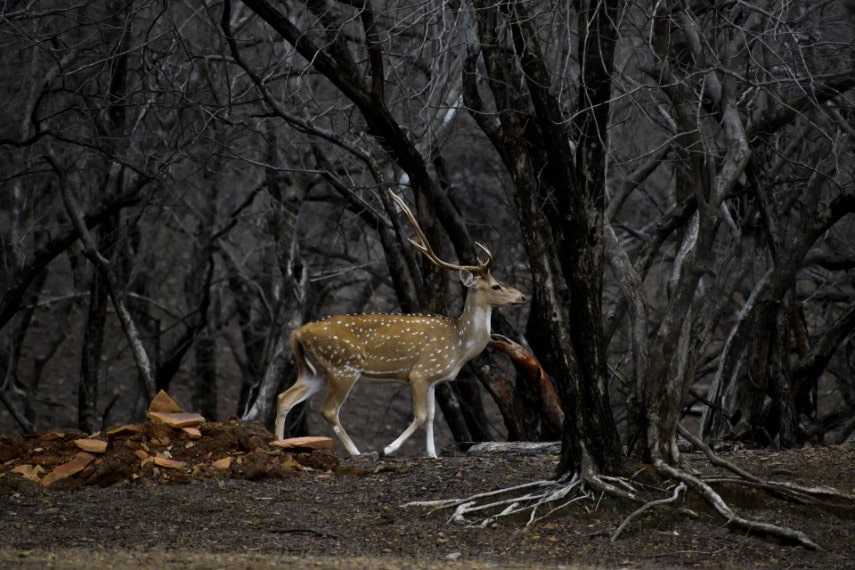
Ranthambore National Park is divided into 10 distinct safari zones, each offering unique wildlife experiences.
Zone 1
Zone 1 is the most popular and exclusive safari zone, known for its higher chances of spotting tigers. It includes the core area of the park, where tigers often roam near waterholes and dense forests. The diverse landscapes, including grassy meadows and rocky terrains, provide an excellent opportunity for photography and observing other wildlife like leopards, sambar deer, and various bird species. It offers thrilling, close encounters with nature’s predators.
Zone 2
Zone 2 is rich in both wildlife and history. This zone encompasses a variety of terrains, including lakes, dense forests, and rugged hills. Tigers are frequently spotted here, especially near waterholes. It’s also home to other animals like wild boar, deer, and crocodiles. The area’s diverse flora and fauna, combined with scenic landscapes, make this zone ideal for nature lovers and photographers. Visitors enjoy both wildlife and the serenity of the surroundings.
Zone 3
Zone 3 is known for its mix of grassy meadows and forests, making it a great spot for spotting a wide range of wildlife. This zone often sees tigers, leopards, and various herbivores like sambar, chital, and nilgai. The terrain is more open, allowing for unobstructed views of the animals. Birdwatchers will also enjoy this zone, as it’s home to many species. The area’s varied ecosystems make it a must-visit for wildlife enthusiasts.
Zone 4
Zone 4 is famous for its dense jungle and rocky landscapes, which offer an exciting safari experience. The zone has a mix of flatlands and hilly areas, making it ideal for tiger sightings, especially during the dry months when they come to water sources. Other animals like leopards, sloth bears, and various species of birds are often spotted here. The zone is a blend of diverse ecosystems, offering visitors an intimate view of Ranthambore’s wildlife.
Zone 5
Zone 5 offers a serene and scenic safari experience with a mix of forests, lakes, and grasslands. Tigers are commonly spotted here, especially near the water bodies. The zone is home to a wide variety of animals, including deer, wild boars, and birds. Its relatively quieter and less crowded nature makes it perfect for those seeking a more peaceful safari experience. The diversity in wildlife and terrain ensures an engaging outing.
Zone 6 (Kundal)
Zone 6 is a beautiful blend of dense forests, rocky outcrops, and open plains, known for frequent tiger sightings. It’s one of the more remote and less explored areas of Ranthambore, offering an off-the-beaten-path safari experience. The zone is home to a variety of wildlife, including leopards, tigers, and marsh crocodiles. Its less disturbed environment creates a unique opportunity to witness wildlife in its natural state, making it a favourite among photographers and nature lovers.
Zone 7 (Chidikho)
Zone 7 is located on the park’s periphery and is known for its scenic views and diverse habitats. The zone’s terrain includes dense forests, rocky hills, and open grasslands. While tiger sightings are less frequent than in other zones, this area offers a great chance to spot other wildlife like wild boars, sambar deer, and leopards. Its proximity to water sources makes it an important area for birds as well, making it a paradise for birdwatchers.
Zone 8 (Balas)
Zone 8 is one of the most picturesque zones, featuring rolling hills, dense forests, and clear water bodies. This area is ideal for wildlife photography, as it combines various terrains and habitats. Tigers are often spotted in this zone, particularly near the water sources. Other animals like leopards, crocodiles, and deer also roam freely. Birdwatchers will find this zone rich with species, adding another layer of excitement to the safari. The zone offers a perfect blend of nature and wildlife.
Zone 9 (Kuwal ji)
Zone 9 is one of the quieter zones, known for its peaceful ambience and abundant wildlife. It offers dense forests, waterholes, and rocky landscapes, creating a perfect environment for tigers and other animals like leopards, sloth bears, and crocodiles. The zone is relatively less crowded, providing a more intimate safari experience. Visitors here enjoy unhurried wildlife sightings and the opportunity to immerse themselves in the beauty of the park’s natural surroundings.
Zone 10 (Aantri)
Zone 10 is the least explored and offers a more off-the-beaten-path safari experience. The zone features a diverse mix of terrain, including dense forests, grasslands, and rocky hills. It is known for its rich biodiversity, including tigers, leopards, and a variety of herbivores. While sightings are less frequent, the peace and seclusion of this zone make it an ideal choice for those looking for a tranquil escape amidst nature. It’s perfect for wildlife photographers and explorers.
Tips on which zones are best for tiger sightings
Here you go about it:
- Zone 1 is Known for its high chances of spotting tigers, especially near waterholes.
- Zone 2 offers frequent tiger sightings in both dense forests and open landscapes.
- Zone 3 is a great zone for tiger sightings, particularly during the dry months.
- Zone 4 is the one where tigers are commonly seen near water sources, and the terrain is ideal for sightings.
- Zone 6 is known for being less crowded and offers an excellent chance for close encounters with tigers.
Where to stay near Ranthambore National Park?
There are various accommodation options near Ranthambore National Park, catering to different budgets. For a luxurious stay, you can choose resorts offering opulent rooms, pools, and spa services. Mid-range options include well-maintained hotels and lodges with comfortable amenities and easy access to the park. Budget travellers can opt for guesthouses or campsites for a more rustic experience. Many accommodations offer safari booking services and provide an immersive nature experience, ensuring a comfortable and convenient stay while exploring the park.
| Best Places to Stay in Ranthambore National Park | |
| The Oberoi Vanyavilas Jungle Resort | Sher Bagh |
| Sawai Madhopur Lodge | Tiger Moon Resort |
| Khem Villas | Tiger Den Resort |
| Ranthambore Regency | Tigers’ Paradise Resort |
| Raj Palace Resort | Anuraga Palace |
What to wear in Ranthambore National Park?
When visiting Ranthambore National Park, it’s important to dress comfortably and practically. Opt for lightweight, breathable clothing in neutral colours like khaki, brown, or olive to blend into the environment. Long sleeves and pants protect you from sun exposure and insects. Wear sturdy, comfortable shoes for safaris and walking trails. A hat, sunglasses, and sunscreen are essential for sun protection. Don’t forget a light jacket for early morning safaris, as temperatures can be chilly. Be prepared for an active, adventurous day in nature.
| For Men & Women | |
| Lightweight, long-sleeved shirts | Sun-blocking gloves |
| Comfortable, breathable trousers or cargo pants | Light jacket or shawl |
| Sturdy walking shoes | Hat or cap for sun protection |
| Moisture-wicking socks | Sandals with good grip |
Conclusion
Ranthambore National Park offers an unforgettable adventure for nature and wildlife enthusiasts. With its rich biodiversity, including majestic tigers, leopards, and vibrant bird species, the park is a true haven for animal lovers and photographers. Whether you’re exploring its diverse zones, embarking on thrilling safaris, or relaxing amidst nature, every moment in Ranthambore is filled with excitement and serenity. Plan your visit to this beautiful sanctuary and immerse yourself in the wonders of the wild.
Read Also: Best time to visit India | Things to do in India


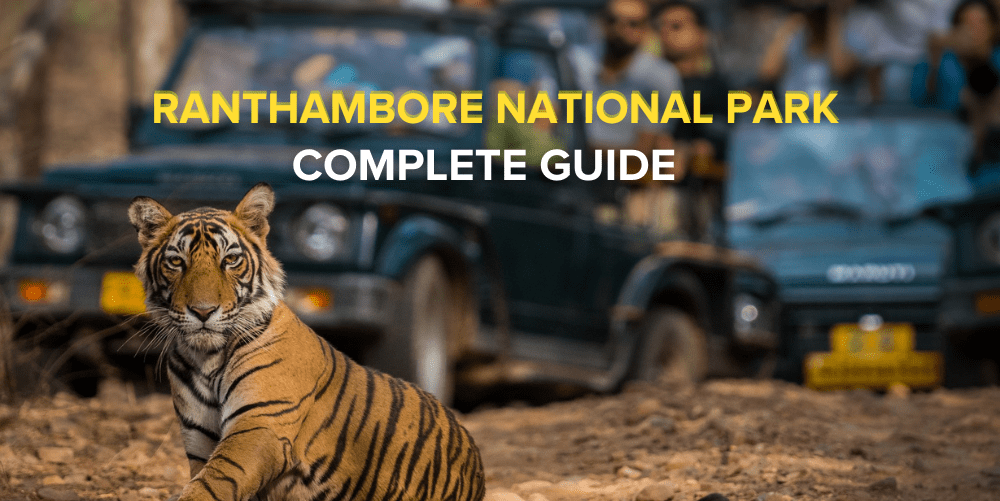





No Comments on A Complete Guide to Visit Ranthambore National Park in 2025